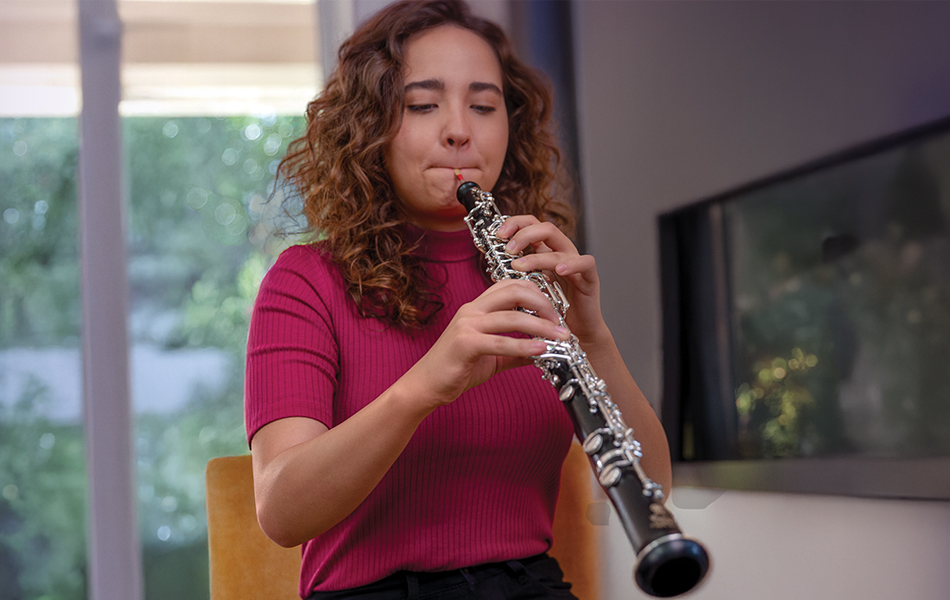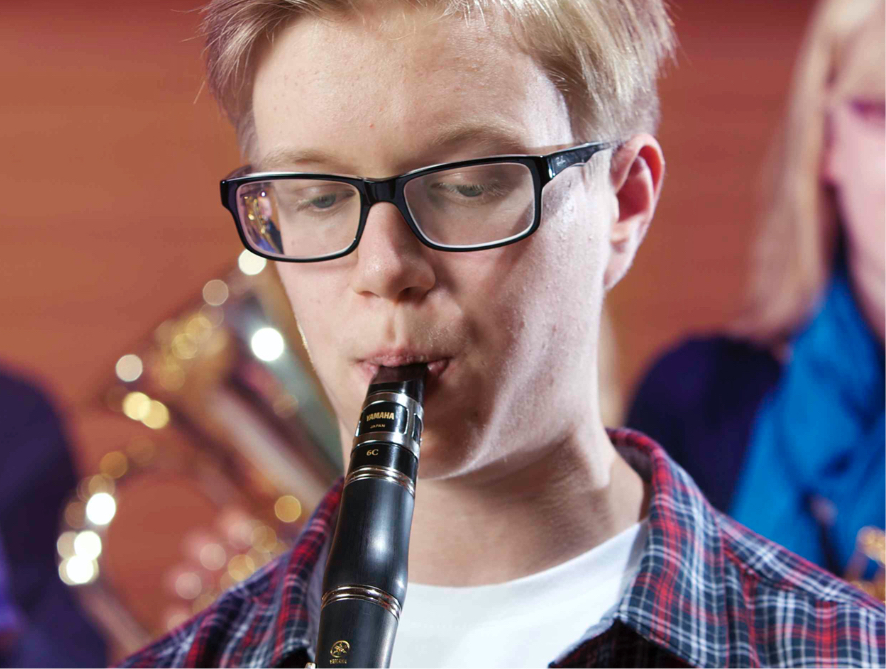The Bass Recorder Takes Center Stage
This unique instrument has become an integral part of an iconic soundtrack.
If you’ve watched Disney Plus’ live-action Star Wars™ series The Mandalorian and heard the show’s otherworldly-sounding theme song, you might be hard-pressed to identify the instrument playing those haunting opening notes.
Guess what? It’s a bass recorder. And while you may think that this is an instrument you’ve never heard before, you may be in for a surprise when you find out some of the hit songs and other soundtracks in which recorders have played an integral role.
First, though, a few facts about this fascinating instrument.
What Is a Bass Recorder?
The recorder that you (and countless students) probably played in elementary school was most likely a soprano recorder, which is actually one of the smallest instruments in a whole family of recorders. (There’s also a smaller version, called the sopranino recorder.) Next in size is the alto (sometimes called the “treble”) recorder, followed by the tenor recorder and the bass recorder, which plays a full octave below the alto recorder (its lowest note is F3). There are even larger versions — the “great” bass recorder and the contrabass (sub-bass) recorder — though these instruments are rarely used.

“Recorder predecessors go back many thousands of years,” notes Matt Kerns, Yamaha Marketing Manager for Winds and Strings Accessories. “Archeologists have found artifacts that they believe are vertical flutes, so they are really kind of fundamental to human nature.”
The recorder evolved into its current state during the Middle Ages in Europe, starting in the second half of the 15th century Renaissance. Its “golden age” is considered to be the 17th to mid-18th century, during the Baroque period, and even though the instrument continued to be used well into the early 19th century classical period, it eventually faded in popularity. The bass recorder seems to have first appeared in the early 17th century.
Popular Usage
They may have fallen out of favor in classical music, but recorders are often used in contemporary rock music as well as movie soundtracks. Songs like Led Zeppelin’s “Stairway To Heaven,” the Rolling Stones’ “Ruby Tuesday” or the Beatles’ “The Fool On The Hill” are dominated by the instrument, and, thanks largely to composer Ennio Morricone, recorders came to define the sound of spaghetti westerns such as “The Good, the Bad and the Ugly,” which has one of the most recognizable and influential soundtracks in history.
“People may think of the recorder as a kids’ instrument because it’s what they start on in elementary school,” says Kerns, “but they have a very ethereal, mystical sound to them. The bass recorder in particular has a certain unique quality to it and I think that’s why it ends up being used as a special effect so frequently.

The Bass Recorder Steps Into the Spotlight
For the opening melody to The Mandalorian theme song, Oscar® and GRAMMY®-winning composer Ludwig Göransson decided to feature a bass recorder. Other than having played a child’s recorder as a young boy in school, Göransson had no previous experience with the instrument. In one fascinating YouTube interview, he says that, since he didn’t know how to play the bass recorder, he spent hours experimenting with it free-form, connecting with his “inner child.” As he sat practicing, in what he describes as an almost meditative state, one simple phrase kept coming back to him over and over again. That melody ended up serving as the memorable opening notes to the show; they not only usher in every episode, but are sprinkled throughout the soundtrack.
Modern Recorder Design and Digital Emulation

Up until the mid-20th century, recorders were traditionally made from wood, but technological advancements have allowed them to be made from plastic as well. These instruments (like the one used on the show) deliver a similar sound but are more affordable than their wood counterparts, making them accessible to more people.
Recorders have entered the modern digital age, too. For example, the Yamaha YDS-150 digital saxophone offers a wide range of voicings, including some that can be customized to emulate the sound of a bass recorder with the use of a companion app. The YDS-150 offers many non-saxophone sounds such as pan pipes, harmonica and shakuhachi, as well as 73 different soprano, alto, tenor and baritone sax sounds.
Try to listen for the sound of the bass recorder in other songs and soundtracks. You might find yourself so inspired that one day you’ll want to play one yourself or incorporate it in your own recordings!
Check out these related blog postings:
The Recorder: It’s an Instrument, Not a Toy
Eco-Friendly Plastics from Plants
What’s the Difference Between an Acoustic Saxophone and the YDS-150 Digital Saxophone?
Click here for more information about Yamaha recorders.
Click here for more information about the Yamaha YRB-302B bass recorder.
Click here for more information about the Yamaha YDS-150 digital saxophone.














